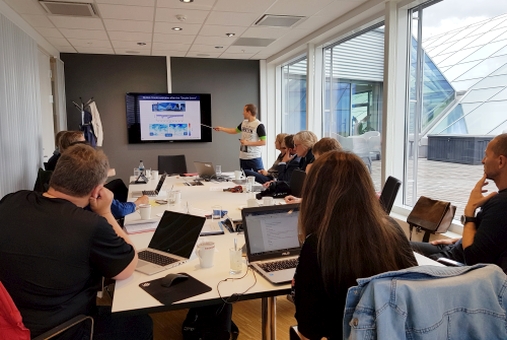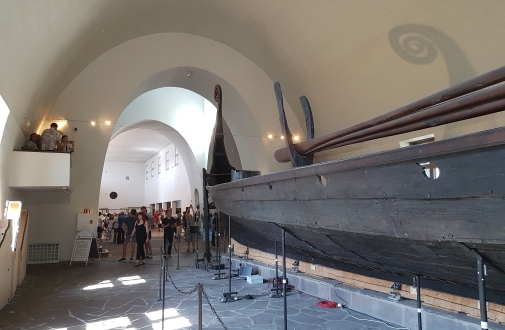
This Monday there were a total of 10 researchers at Toppsenteret, CIENS. The attendees were from different subject fields; meteorology, volcanology, climate research, biology, and not least, archeology. The start-up meeting featured presentations from the project group.
They worked on the best ways to connect the different disciplines within the project, and gained an overview of data required to understand volcanism and its impact on climate, and Viking communities in the past.
Climate change in the near past
Project manager is Kirstin Krüger, Professor at the Department of Geosciences. She held a steady hand on the progress of the meeting. In the VIKINGS project, they will try to understand why and how immigration and turmoil among the people in the north may have been caused by changes in the climate from 500 to 1250 AD. A time known as the Viking age in Scandinavia, and in Europe, the Middle Ages.
Interdisciplinary projects are not uncommon within the geosciences, where the goal is to understand complex processes occurring in nature. What is novel is that they will understand how such processes influenced the development of the Viking communities. Did volcanic activity make it colder or warmer? Did they adapt to the new climate conditions? This theme has not been previously explored and there are plenty of questions to be tackled.
The period of time they will focus on is between 500-1250 AD and is a period known for several other natural disasters, people's mobility, expansion of the Vikings, and volcanic eruptions.
From historical sources of geochemical analyzes
They know that volcanoes in Iceland had outbreaks during this period. Iceland has over 23 volcanic systems. One of the eruptions was from Eldgjá, a volcano that produced the largest basalt flow in historical times (934-39AD). They have sources of years and events from historical records, including from Nordic sagas. In Norse mythology, fimbulwinter is described - an extreme winter that lasted for several years after 536 AD. However, the historical sources are limited.

However, within natural sciences there more places to look. Geochemical traces in 9 ice cores from the ice sheet in Greenland testify to the changes in the past-atmosphere. Substances such as sulfur and lead are detected; these are known to originate from volcanoes and isotopic analyzes of sulfur can tell us something about when the eruption occurred. Geologists also expect to find traces of volcanic ash in sediments that have been deposited in lakes in Western and Southern Norway.
Archaeologists can find traces of the relocation of settlements in Western Norway or in Iceland, and not least, can find of grave goods and soil in graves. Humans remains can also be analyzed to say something about how they lived. Climate change can also be detected in biological material from plants and trees from the period. This material that has not previously been analyzed for the impact of climate change.
The range of volcanic eruptions
An important issue is the range of eruptions from the Icelandic volcanic systems. Key questions arise, such as could the gases have risen high in the stratosphere (c.15-50 km above the surface) or stayed in the troposphere (c.<15 km)? Outbreaks that travel high are able to spread over the northern hemisphere.
Such volcanic eruptions can also give rise to large amounts of gases that can cause the climate to cool down over several years, but they can also cause heating.
The project takes shape
The work is divided into work packages WP1-WP5, led by the respective researchers. At the meeting they went through work packages and timelines. The project includes several PhD fellows and post doctoral fellows, and several employment processes are proceeded.
The project co-operation is led by Kirstin Krüger, Department of Geosciences, and is joined by Anne Hope Jahren and Henrik H. Svensen from the Department of Geosciences/Centre for Earth Evolution and Dynamics (CEED), Frode Iversen from the Cultural History Museum, UiO, and Jostein Bakke from the Department of Geosciences, UiB. Other partners will also participate in the project.
Project:
- Volcanic Eruptions and their Impacts on Climate, Environment, and Viking Society in 500–1250 CE (VIKINGS).
Financing:
- The Research Council of Norway. FRIPRO Toppforsk/FRINATEK with duration 2018 to 2023.